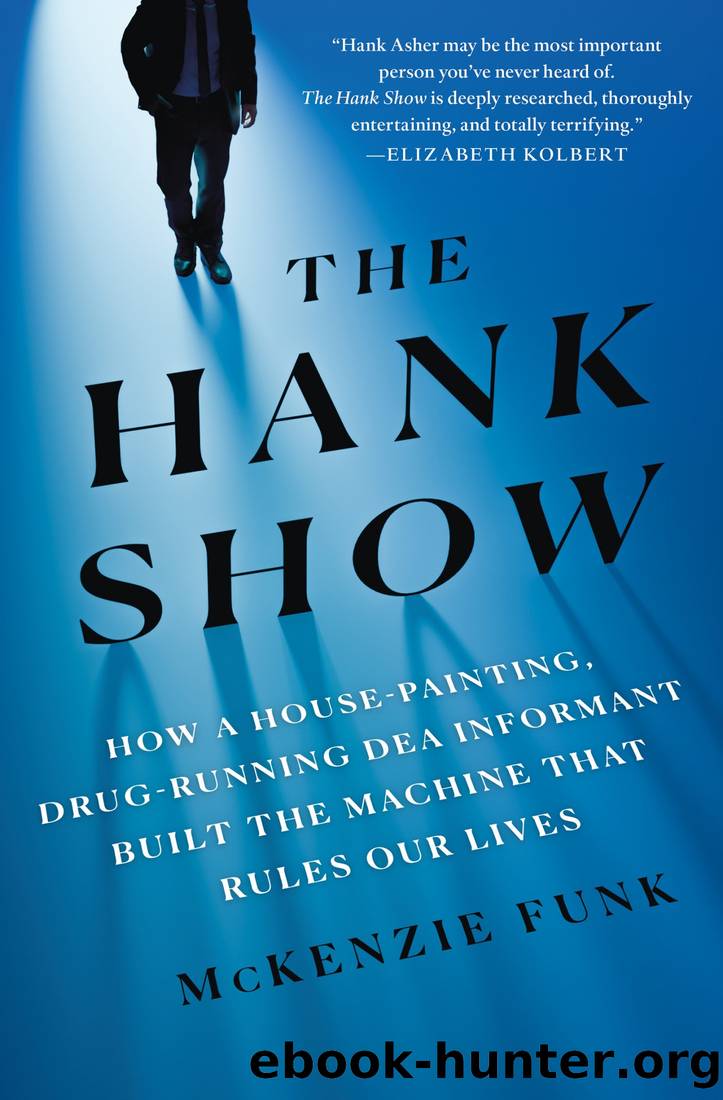The Hank Show by McKenzie Funk

Author:McKenzie Funk [Funk, McKenzie]
Language: eng
Format: epub
Publisher: St. Martin's Publishing Group
* * *
The one exception was LexisNexis.
Away from the glare of Silicon Valley, in confidential briefings for government agencies and clients in corporate America, LexisNexisâs data scientistsâveterans of Seisint, most of them, who had been there during the creation of HOle and ECLâtouted the superiority of their own social graph, which they termed the Public Data Social Graph: four billion âpeople relationshipsâ connecting some three hundred million LexIDs inferred from fifty terabytes of records. Lexis had prebuilt algorithms to look for specific signals in the graph, and its proprietary social-network-analysis tool, a spider-chart maker called Relavint, had been available to clients since 2001, when Zuckerberg was still in high school. It had even been part of the January 2003 demo for Vice President Dick Cheney and other national leaders in the White House.
âThis [graph] is not built from social-networking sources,â sniffed one LexisNexis executive, âbecause we are very risk averse.â LexisNexisâs social graph used real-world dataâfrom DMVs, utility bills, past addressesâto better capture real-world relationships. A roommate was a definitive close associate, LexisNexis argued, but a Facebook âfriendââwho knows?
Running through the nodes of its graph, LexisNexis could help lenders identify who was more likely to be associated with real-estate fraud: a buyer whose trusted social network overlapped with the sellerâs. It could tell a hospital who in the graph would be less likely to be readmitted after an inpatient surgery: someone with a doctor or nurse in their trusted social network.
Hank Asher had never studied Stanley Milgramâhe lacked the performative intellectualism that was becoming commonplace in Silicon Valleyâand he had never studied social-network analysis. But the social graph was implicit in everything heâd built.
Encoded in his love of shiny objectsâF. Lee Bailey, Ken Langone, John Walsh, Jon Sale, Rudy Giulianiâand, equally, in the algorithm for the High Terrorist Factor, was an idea both useful and dangerous: you could judge a personâassign them a scoreâbased on the company they kept, the locations they frequented. In the MATRIX, your proximity to a âdirtyâ address or phone number, as one Seisint document had put it, was one proxy for your own risk of being a terrorist. In a chain of contacts, a spiderweb of links, the nodes were lifted up or dragged down by the ones around them. You were as good or bad as your network. Get one hop closer to âAmericaâs mayor,â and his reputation could launder your own. Get one hop closer to Mohamed Atta, and you could be deported.
âYour proximity to those nineteen hijackers,â Bill Shrewsbury says, âthat was a big part of the Hank Terrorist Factor.â Well before the social graph was clearly visible to all, before most of America was painted Facebook Blue (Hex ID 3b5998), the two old friends had known it was there, even making a joke of terrorist-scoring the strangers they met. Often, when they got into a taxi together, Shrewsbury says, they laughingly sized up its immigrant driver. They imagined his network; they profiled him. âWhat do you think, Shrew? A 980?â Asher might ask.
Download
This site does not store any files on its server. We only index and link to content provided by other sites. Please contact the content providers to delete copyright contents if any and email us, we'll remove relevant links or contents immediately.
Hit Refresh by Satya Nadella(8345)
When Breath Becomes Air by Paul Kalanithi(7273)
The Girl Without a Voice by Casey Watson(7271)
Do No Harm Stories of Life, Death and Brain Surgery by Henry Marsh(6343)
A Court of Wings and Ruin by Sarah J. Maas(6115)
Hunger by Roxane Gay(4235)
Shoe Dog by Phil Knight(4183)
Everything Happens for a Reason by Kate Bowler(4076)
A Higher Loyalty: Truth, Lies, and Leadership by James Comey(4041)
The Rules Do Not Apply by Ariel Levy(3914)
Tuesdays with Morrie by Mitch Albom(3841)
The Immortal Life of Henrietta Lacks by Rebecca Skloot(3833)
How to Change Your Mind by Michael Pollan(3689)
Millionaire: The Philanderer, Gambler, and Duelist Who Invented Modern Finance by Janet Gleeson(3576)
All Creatures Great and Small by James Herriot(3527)
Elon Musk by Ashlee Vance(3461)
Tokyo Vice: An American Reporter on the Police Beat in Japan by Jake Adelstein(3441)
Man and His Symbols by Carl Gustav Jung(3326)
The Money Culture by Michael Lewis(3291)
